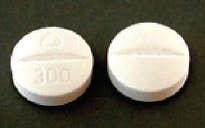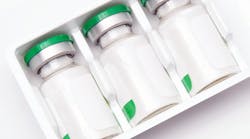Last month, we presented a current problem facing the pharmaceutical Industry: What to do about tablet bisects that should break the tablet cleanly into two portions. In reaction to the HMO practice of dispensing drugs with pill cutters, a more functional bisect will be needed in the future. The phrase this tablet may be split into two parts for convenient administration, once placed in the patient information, now takes a more serious and perhaps a higher legal position. Facing this, how does one choose an optimized bisect and on what basis?
Bisects and Scores
The purpose of the bisect is to produce a desired dosage by dividing the tablet into two or more equal parts. A decision to place a bisect on a tablet is not straightforward. The bisect may be affected by the tablet cup depth, band thickness and the intended tablet hardness. As the tablet size increases or changes, so do the size and type of bisects that may be placed. Generally, there are seven types of bisect lines. One may conveniently review these bisect types by reading the Tablet Specification Manual (The TSM), published by the American Association of Pharmaceutical Scientists [1].
The seven types range from the most functional bisect, called a G-type, which is very sensitive to pressure placed on it by humans, to the least functional or H-Type which is considered a cosmetic bisect. Figures 1 and 2 (below) illustrate the apparent differences between an A-type and a E-Type bisect.
Figure 1 (above): An A-type and an E-type bisect are not engineered to perform the same way. Figure 2 (right): An example of a C-type decreasing bisect on both the upper and lower faces of the tablet.
Optimized Bisect Effectiveness
Bisect options may differ both in terms of width and depth. Selecting an appropriate bisect depends in part on tablet size, shape and weight. Once the size and shape have been determined, the position of the bisect becomes important.
In pharmaceuticals, the bisect must compete with the letters and numbers identifying the drug. In the past, the letters and numbers took priority and the bisect was sometimes even added as an afterthought. In some instances, they were added to the wrong side of the tablet to make room. Today, with the bisect taking a more important role, placement of the bisect is important.
For example, with concave tablets it is especially important to avoid placing the bisect on the lower punch, since doing so may cause damage when the tablet is ejected from the die. Unfortunately, there is no equal tradeoff when reviewing these considerations. In the future, the identification of the tablet may require smaller letters/numbers to allow for a larger, deeper and optimized bisect [2].
Changing Bisects
Many existing tablets feature an E-Type or standard bisect, but may not split evenly when an individual attempts to diide them into equal doses [3]. In such cases, the firm will need to explore moving to either a C-, D- or G- type. One needs to recognize that making this change may result in the need to change the size of the letters or numbers.
Under existing guidelines, the FDA does not consider either of these changes significant, as long as there is no change in the code itself. Each manufacturer must determine which bisect best fits the product. The TSM offers more detailed information concerning the differences between standard concave, deep concave and flat faced bevel edged tablets. Especially important is the position of the bisect on the top of the tablet.
Improper placement may cause unnecessary injury at the ejection station. For example, in Figure 2, a C-type bisect has been placed on both sides of the tablet, a practice that we do not recommend.
For new products not yet fully specified, we recommend avoiding E-, B -and H- type bisects. For different products, one may select either the D, C or A types, but the A type may not be the suitable for brittle active ingredients.
Tablet bisects have become a new issue in designing effective tablets. As HMOs drive the need for clean, effective tablet cutting, pharmaceutical companies, pharmacists and patients must be aware of both the advantages and disadvantages of this practice.
References
- Tableting Specifications Manual, 7th edition, APhA Tableting Specification Steering Committee, AphA Publishing, 2005.
- Pharmaceutical Dosage Forms, Vol. 2, 2nd Ed. New York: Marcel Dekker, Inc. 1989.
- Wiggins, L: Cutting Pills in Half Saves Money, but is it Always Safe?, Gwinnett County Gazette, Feb. 8, 2006, gwinnettdailypost.com







